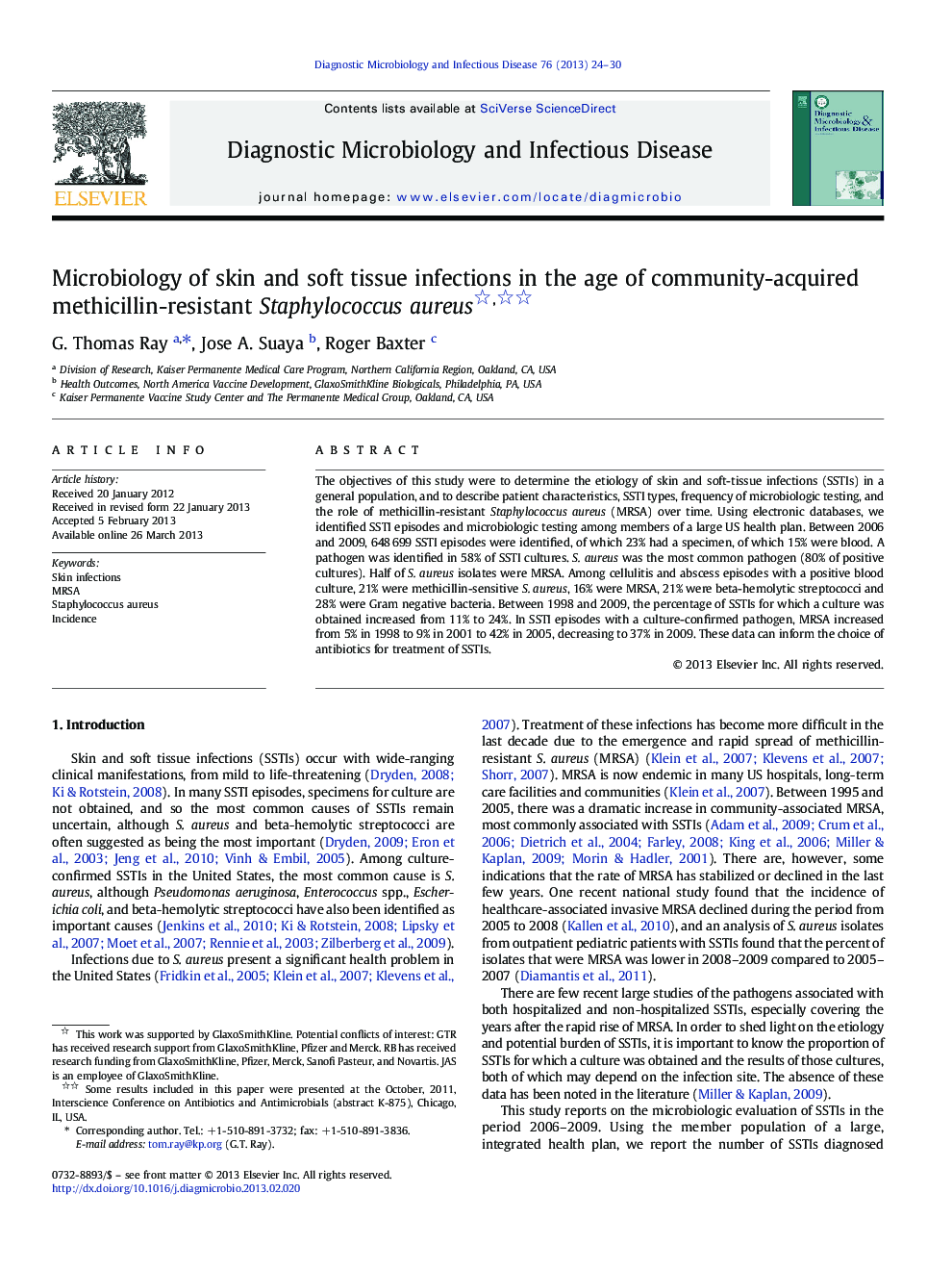| Article ID | Journal | Published Year | Pages | File Type |
|---|---|---|---|---|
| 6116237 | Diagnostic Microbiology and Infectious Disease | 2013 | 7 Pages |
Abstract
The objectives of this study were to determine the etiology of skin and soft-tissue infections (SSTIs) in a general population, and to describe patient characteristics, SSTI types, frequency of microbiologic testing, and the role of methicillin-resistant Staphylococcus aureus (MRSA) over time. Using electronic databases, we identified SSTI episodes and microbiologic testing among members of a large US health plan. Between 2006 and 2009, 648Â 699 SSTI episodes were identified, of which 23% had a specimen, of which 15% were blood. A pathogen was identified in 58% of SSTI cultures. S. aureus was the most common pathogen (80% of positive cultures). Half of S. aureus isolates were MRSA. Among cellulitis and abscess episodes with a positive blood culture, 21% were methicillin-sensitive S. aureus, 16% were MRSA, 21% were beta-hemolytic streptococci and 28% were Gram negative bacteria. Between 1998 and 2009, the percentage of SSTIs for which a culture was obtained increased from 11% to 24%. In SSTI episodes with a culture-confirmed pathogen, MRSA increased from 5% in 1998 to 9% in 2001 to 42% in 2005, decreasing to 37% in 2009. These data can inform the choice of antibiotics for treatment of SSTIs.
Related Topics
Life Sciences
Immunology and Microbiology
Applied Microbiology and Biotechnology
Authors
G. Thomas Ray, Jose A. Suaya, Roger Baxter,
